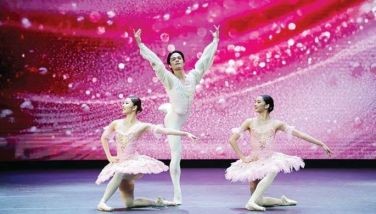Serenata Afternoons in Cebu
CEBU, Philippines — In the past, there are two ways to enjoy one’s afternoon in Cebu. First, and probably the most popular, is the siesta. During siesta, one rests or sleeps through the afternoon, when the sun is hot and the air is very humid. This was a typical practice in Filipino communities during the Spanish colonial period.
This practice is still around today, especially in the province. After working the whole morning, an early afternoon nap is often needed.
There was another way to enjoy the afternoon, and it was called the serenata. The serenata, which originated from Italy, is a musical composition and/or performance to honor someone. In a Filipino setting, this takes on a more festive meaning.
Serenatas were public musical performances. These performances were usually held in parks and plazas, where people can spend their afternoons enjoying the nice weather when listening to calm and soothing music.
In Cebu, according to Concepcion G. Briones in her book “Life in Old Parian,” the Plaza Libertad (now Plaza Independencia) used to hold serenatas twice a week, on Thursdays and Sundays. It was on Sundays, however, that the serenatas drew large crowds. On Sundays, the plaza was filled with people, usually young couples and young singles, where they were free to mingle. This occasion would provide an opportunity for young men to meet and openly court the young ladies.
Serenatas were also very popular during the summer, increasing attendance by a hundredfold, when most of the men came home from their studies in Manila for a very long vacation.
“After hearing mass, my sisters would ask our mother for permission to go to the plaza to spend their afternoon,” said Mrs. Constancia Enero, a 91-year-old resident of Brgy. Tejero. “I was too young, and my mother never allowed me to go with them, insisting that I should instead be sleeping.” She added. “My sisters would just tell me stories later on, mostly about the young men they fancied.”
Eventually, the serenata’s popularity waned by the 1930s, partly because of the Summer Carnivals, which brought in a more festive mood.
But owing to the radio’s popularity in the Cebuano community, the serenata was able to survive, and found its way into Cebuano culture once again in the 1960s.
While the popular radio programs were dramas, poetry programs, and balitaw segments, the serenatas provided musical intermissions to these different programs on the radio. To add a little bit of flavor, the haranistas, would incorporate elements of the balak (local poems) into the serenata.
But in the advent of television, the serenata became completely an affair of the past. TV brought with it multi-sensory entertainment, defeating the auditory radio.
There were efforts, however, to revive the serenata. When Florentino Solon was mayor of Cebu City, he organized serenatas on weekends. These serenatas were staged in the different rural and urban barangays in the 1980s, and was performed by what was then called the Cebu City Orchestra.
During the 1990s, the Casa Gorordo Museum also tried to revive the serenata. “Every Saturday afternoon, serenatas would be played in the garden, or azotea” said Potamio Cangke, security guard of Casa Gorordo Museum for 31 years.
Now, the Casa Gorordo Museum is once again reviving the serenata. In March, the serenata was heard pulsating from the museum on several Saturdays. Amiel D. Cortes, Ramon Aboitiz Foundation Inc.
- Latest




























